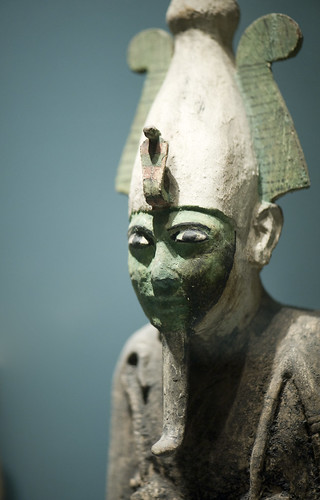Another exciting CRE conference is about to begin today, as I write this, this time and for the first time ever in Leiden, The Netherlands. Current Research in Egyptology (CRE) has always happened in The UK but, last time, at Liverpool, no one from UK universities wanted it, so our beloved colleagues from Leiden applied and won!
CRE is the best way to show your work, explain your research, collect contacts from all over the world and get access to books that don’t exist in your country either by buying them at sale prices or by browsing the nicest libraries in the UK and now Leiden.
I started my international approach by coming to CRE for the first time in 2005. Along the way I met famous Egyptologists, made friends with people of different nationalities, and got all kind of information relevant for my research.
I am very glad to be here for the first time as Leiden is famous for its library and the quality of teaching. I am sure it will be a very successful event!
This year, I am going to present a session called Osiris’ green: his body represented in medicinal plants. The session in which my presentation is included, Tuesday January 7th, from 9.30 to 11.30, is about religion.
The papers include a session by Susanne Tpfer about embalming and its instructions on Papyri Boulaq 3 and Louvre 5158 (embalming was a necessary part of preparations for the afterlife and was practiced by priests). There will aslo be a session by Jared Brent Krebsbach focusing on the worship of the god Atum. Atum was one of the first gods to be worshipped in Egypt but, in the Persian period, he resurfaces and I am also curious to know what will be presented. Kata Jasper will give a talk on the god Ha – a god that can be personified. Ha, the lord of the Lybian desert, and also creator of oases, is one I would like to know more about as a human morphological-featured god with sand dunes on his head (Khadafi?).
Last but not least, my own Green Osiris, in which I will try to establish the relationship between Osirian cults, with focus
on the annual festival, and some medicinal plants used in ancient Egypt, referring to Papyrus Salt 825, which mentions a tree identified with Osiris. Therefore, we must admit that the ancient Egyptians considered this tree to have magical/divine/medicinal properties. From the hundreds of plants, trees, bushes, spices and other elements of the vegetal kingdom used in ancient Egyptian pharmacopoeia, listed in prescriptions in the various medical papyri, there are a few with relevance.
I am very excited about this conference as there are people coming I have not met yet. I am looking forward to some special treats in this conference. From the abstracts, I can say I really want to hear Dr. Demare on later Ramesside kings, Nathalie Andrews on a chapter from the Book of the Dead and all the funerary texts sessions as they are very close to my subject now. Also the cross-cultural relations session and the radio carbon dating one, as it is one of my favorite techniques, and it is being used to date our Porto sarcophagus.
I’m also looking forward to the early Christianity session as I have been studying a Coptic period amulet for some years now, and I am always interested in knowing more and learning more with my colleagues who are specialists on Coptic language and culture. The interdisciplinary approaches session also interests me, as my former colleagues from Manchester are presenting their research and the work of my friend Howard Middleton-Jones about the Coptic monasteries is also present. The lecture by Dr. Versluys promises to shake some heads too, so it is worth going to, and the temples session looks very good with Kalabsha, Abydos and Deir el-Bahari being presented.
I am going to be posting updates daily, throughout the course of this conference, so, just log on everyday to see what is happening!
